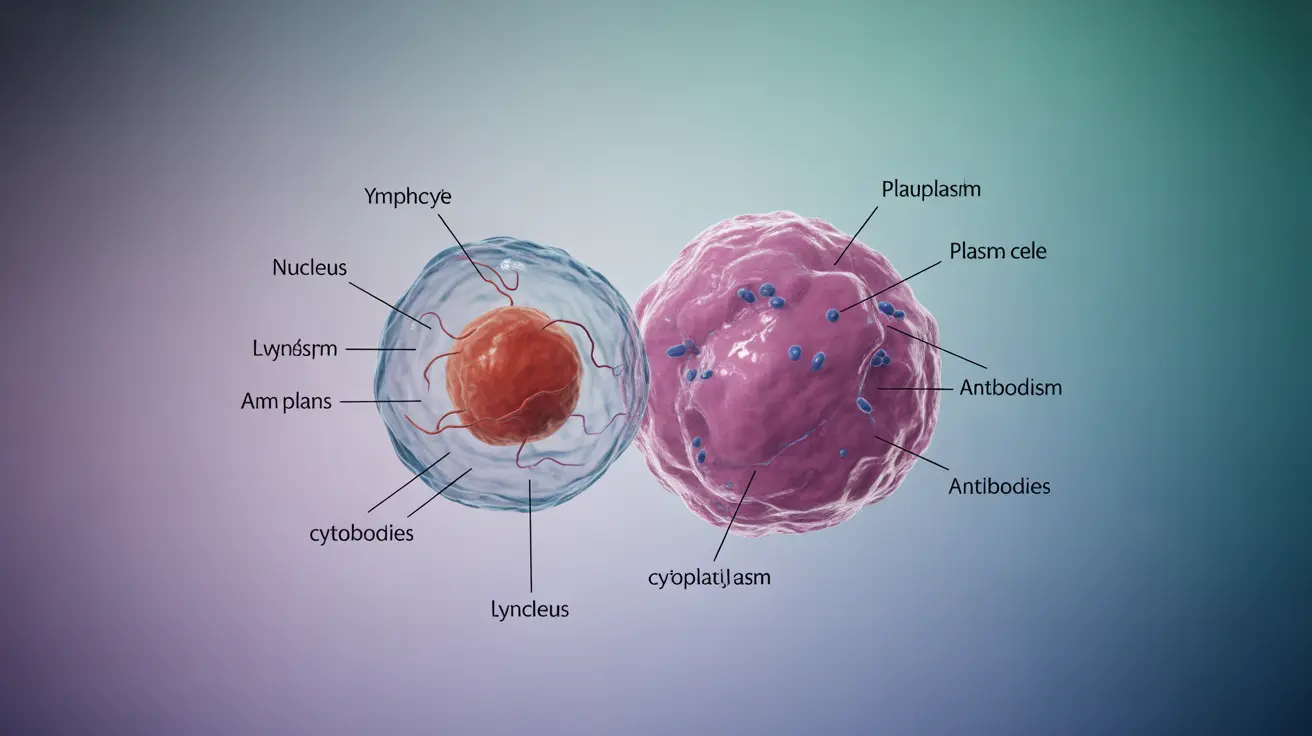Blood cancers can be complex to understand, especially when comparing different types like lymphoma and myeloma. While both conditions affect the body's blood and immune system, they have distinct characteristics, symptoms, and treatment approaches. Understanding these differences is crucial for proper diagnosis and treatment.
This comprehensive guide explores the key distinctions between lymphoma and multiple myeloma, helping you understand how these blood cancers differ in their development, symptoms, diagnosis, and treatment options.
Understanding the Basic Differences
The fundamental difference between lymphoma and myeloma lies in the types of cells they affect. Lymphoma primarily affects lymphocytes, a type of white blood cell crucial for immune function. Multiple myeloma, on the other hand, develops in plasma cells, which are specialized white blood cells that produce antibodies.
Disease Characteristics and Development
Lymphoma Characteristics
Non-Hodgkin's lymphoma typically develops in lymph nodes and can spread throughout the lymphatic system. It can affect various types of lymphocytes and may present in different parts of the body, including the skin, brain, or other organs.
Multiple Myeloma Characteristics
Multiple myeloma specifically targets plasma cells in the bone marrow. These cancerous cells produce abnormal antibodies called M proteins, which can cause various complications throughout the body, particularly affecting the bones and kidneys.
Common Symptoms and Warning Signs
Lymphoma Symptoms
Common symptoms of lymphoma include:
- Swollen lymph nodes
- Unexplained fever
- Night sweats
- Unexplained weight loss
- Fatigue
- Itchy skin
Multiple Myeloma Symptoms
Multiple myeloma typically presents with:
- Bone pain, especially in the spine or chest
- Frequent infections
- Fatigue
- Kidney problems
- Weakness or numbness in legs
- Easy bruising or bleeding
Diagnostic Approaches
Both conditions require different diagnostic techniques, though some tests may overlap. Doctors typically use blood tests, imaging studies, and biopsies to confirm diagnoses. Multiple myeloma often requires specific tests to detect M proteins, while lymphoma diagnosis focuses more on lymph node biopsies and imaging studies.
Treatment Strategies
Treatment approaches vary significantly between these conditions. While both may utilize some similar methods, the specific protocols differ based on the unique characteristics of each disease.
Lymphoma Treatments
Common treatments for lymphoma include:
- Chemotherapy
- Radiation therapy
- Immunotherapy
- Targeted therapy
- Stem cell transplantation in some cases
Multiple Myeloma Treatments
Multiple myeloma treatment typically involves:
- Targeted therapy
- Immunomodulating drugs
- Proteasome inhibitors
- Chemotherapy
- Stem cell transplantation
- Supportive treatments for bone health
Frequently Asked Questions
- What are the main differences between multiple myeloma and non-Hodgkin's lymphoma in terms of symptoms and affected cells?
Multiple myeloma affects plasma cells in the bone marrow and typically causes bone pain, kidney problems, and frequent infections. Non-Hodgkin's lymphoma affects lymphocytes and usually presents with swollen lymph nodes, fever, and night sweats.
- How are multiple myeloma and non-Hodgkin's lymphoma diagnosed and what tests are involved?
Multiple myeloma diagnosis involves blood tests for M proteins, urine tests, bone marrow biopsy, and imaging studies. Lymphoma diagnosis typically requires lymph node biopsy, imaging studies like PET-CT scans, and blood tests.
- What treatment options are available for multiple myeloma compared to non-Hodgkin's lymphoma?
Multiple myeloma treatments focus on targeted therapies, immunomodulating drugs, and proteasome inhibitors, while lymphoma treatments typically involve chemotherapy, immunotherapy, and radiation therapy. Both may use stem cell transplantation in certain cases.
- What are the common risk factors for developing multiple myeloma versus non-Hodgkin's lymphoma?
Multiple myeloma risk factors include advanced age, male gender, African American race, and family history. Non-Hodgkin's lymphoma risk factors include age, weakened immune system, certain infections, and exposure to certain chemicals.
- How do the prognosis and survival rates differ between multiple myeloma and non-Hodgkin's lymphoma?
Prognosis varies significantly based on the specific type and stage of the disease. Non-Hodgkin's lymphoma often has a more favorable outlook, especially with early detection. Multiple myeloma, while typically not curable, has seen improved survival rates with modern treatments.




